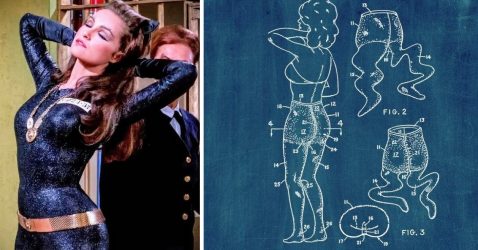15 People Who Changed America—For All the Wrong Reasons
2. Jim Jones
The charismatic cult leader orchestrated one of the largest mass murder-suicides in history at his Jonestown compound in Guyana. Jones manipulated his followers through a toxic blend of religious fervor, socialist ideology, and psychological manipulation, building a devoted following through his Peoples Temple organization.
His actions culminated in the deaths of over 900 people on November 18, 1978, when he ordered his followers to drink cyanide-laced punch. The tragedy occurred after U.S. Congressman Leo Ryan’s investigative visit to Jonestown ended in violence, with Ryan and several others murdered on Jones’s orders.
3. J. Edgar Hoover

As the first FBI Director, Hoover transformed American law enforcement but left a legacy of controversy and abuse of power. During his 48-year tenure, he used the FBI to harass civil rights leaders, collect damaging information on politicians, and conduct illegal surveillance operations.
Hoover’s COINTELPRO program targeted various political groups and activists, while his secret files on public figures gave him unprecedented influence over American politics. His methods of maintaining power through intimidation and blackmail have made him one of the most controversial figures in U.S. law enforcement history.
4. Joseph McCarthy

The Wisconsin Senator unleashed a period of intense anti-communist paranoia in 1950s America through baseless accusations and theatrical investigations. McCarthy’s reckless allegations of communist infiltration in the U.S. government destroyed countless careers and lives without producing evidence of actual subversion.
His aggressive tactics and unsubstantiated claims gave rise to the term “McCarthyism,” symbolizing unfair political persecution and witch hunts. McCarthy’s influence finally waned after the Army-McCarthy hearings exposed his methods to national television audiences, leading to his censure by the Senate in 1954.
5. Richard Nixon

The only U.S. president to resign from office, Nixon’s involvement in the Watergate scandal and subsequent cover-up permanently damaged public trust in government. Despite significant foreign policy achievements, including opening relations with China and détente with the Soviet Union, his presidency is defined by corruption and abuse of power.
Nixon’s secret recording system ultimately proved his undoing, revealing his direct involvement in obstructing justice. The scandal exposed a pattern of illegal activities, including campaign dirty tricks, political espionage, and attempts to use federal agencies against opponents.
6. Timothy McVeigh

The Oklahoma City bomber committed what was then the deadliest act of domestic terrorism in American history. His 1995 attack on the Alfred P. Murrah Federal Building killed 168 people, including 19 children, and injured hundreds more.
McVeigh’s anti-government extremism and calculated violence shocked the nation’s conscience. His attack, motivated by revenge for government actions at Ruby Ridge and Waco, demonstrated the deadly potential of domestic terrorism and right-wing extremism.
7. Charles Manson

The cult leader orchestrated a series of brutal murders in 1969 that terrorized Los Angeles and became a dark symbol of the counterculture era’s end. Manson’s “family” of followers carried out the notorious Tate-LaBianca murders under his direction.
Through manipulation and drug use, Manson convinced his followers to commit horrific acts of violence, hoping to spark an apocalyptic race war he called “Helter Skelter.” His trial became a media sensation, and he remained a disturbing figure of public fascination until his death in prison in 2017.
8. John Wilkes Booth
Lincoln’s assassin changed the course of American history and post-Civil War reconstruction with a single gunshot at Ford’s Theatre. A Confederate sympathizer and famous actor, Booth’s dramatic murder of the president shocked a nation still reeling from civil war.
His actions not only robbed America of Lincoln’s leadership during crucial reconstruction years but also intensified sectional bitterness. Booth’s conspiracy also targeted other government officials, though most of these attempts failed.
9. Mary Mallon (Typhoid Mary)

The infamous asymptomatic carrier of typhoid fever refused to accept her condition, leading to multiple deaths. Despite evidence that she was spreading the disease through her work as a cook, Mallon repeatedly violated restrictions on her employment.
Her defiance of public health officials led to forced quarantine on North Brother Island for much of her later life. Mallon became a symbol of the conflict between individual rights and public health safety.
10. Andrew Jackson

While celebrated by some, Jackson’s presidency is marked by the forced removal of Native Americans and expansion of slavery. His Indian Removal Act led to the Trail of Tears, resulting in thousands of deaths among displaced Cherokee people.
Jackson’s populist appeal masked his autocratic tendencies and disregard for Supreme Court decisions protecting Native American rights. His policies toward Native Americans and support for slavery have made him increasingly controversial in modern historical assessment.
11. Aaron Burr

The third Vice President of the United States is infamous for killing Alexander Hamilton in a duel and later facing treason charges. Burr’s political career was destroyed by the Hamilton duel, leading him to allegedly plot the creation of an independent nation in the Southwest.
Though acquitted of treason, Burr’s reputation never recovered from these events. His complex legacy includes both service as a Revolutionary War officer and schemes that threatened the young nation’s unity.
12. John Dillinger

The Depression-era bank robber became Public Enemy No. 1 through a series of violent heists and prison breaks. While some saw him as a folk hero during the Great Depression, his gang’s activities left multiple law enforcement officers dead.
Dillinger’s criminal career ended in a hail of FBI bullets outside Chicago’s Biograph Theater in 1934. His death marked a significant victory for J. Edgar Hoover’s FBI, though Dillinger’s legend has persisted in popular culture.
13. Lee Harvey Oswald

The assassin of President John F. Kennedy forever changed the course of American history with his actions on November 22, 1963. His murder of JFK in Dallas sparked countless conspiracy theories and left an indelible mark on the nation’s psyche, representing one of the most traumatic moments in American history.
Beyond Kennedy’s assassination, Oswald’s complex background as a former Marine who defected to the Soviet Union and his subsequent murder by Jack Ruby added layers of intrigue to his infamy.
His actions not only ended the life of a beloved president but also shattered America’s sense of security and innocence, ushering in an era of heightened skepticism toward government institutions and official narratives.
14. Patty Hearst

The newspaper heiress’s transformation from kidnapping victim to apparent willing participant in bank robberies fascinated and disturbed America. Her case sparked intense debate about brainwashing and Stockholm syndrome after she joined her captors in the Symbionese Liberation Army in 1974.
Though later pardoned, Hearst’s story highlighted questions about criminal responsibility and psychological manipulation. Her case remains a controversial example of how trauma and captivity can affect behavior.
15. Jeffrey Dahmer

The Milwaukee serial killer’s crimes shocked the nation with their brutality and depravity. Between 1978 and 1991, Dahmer murdered and dismembered 17 men and boys, engaging in necrophilia and cannibalism.
His crimes exposed failures in law enforcement and social services, particularly regarding the treatment of minority victims. Dahmer’s case became a symbol of both the dark potential of human nature and institutional negligence in protecting vulnerable populations
These 15 individuals represent more than just a catalog of American infamy – they embody warnings about power, betrayal, and the dark potential within human nature. Their actions have shaped legislation, reformed institutions, and forever altered how we approach security, justice, and public trust.
While their deeds warrant universal condemnation, studying these figures helps us understand how to prevent similar atrocities and betrayals in the future.
More from Viral Chatter

Have you ever wondered who the most despised figures in history are? History is filled with individuals whose actions and ideologies have left indelible scars on humanity because of their ruthless pursuits of power, insatiable thirst for conquest, or unwavering commitment to destructive ideologies.





